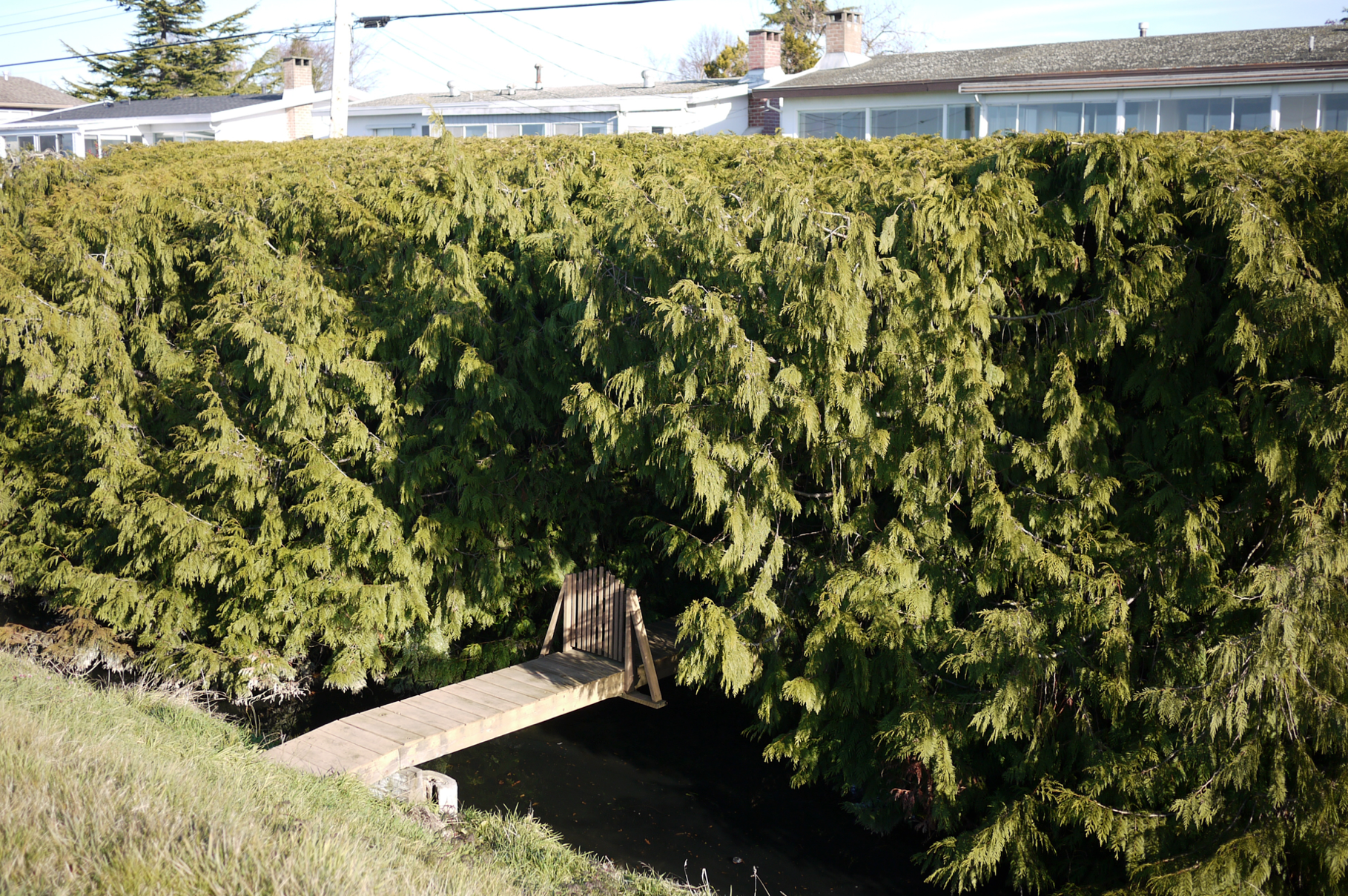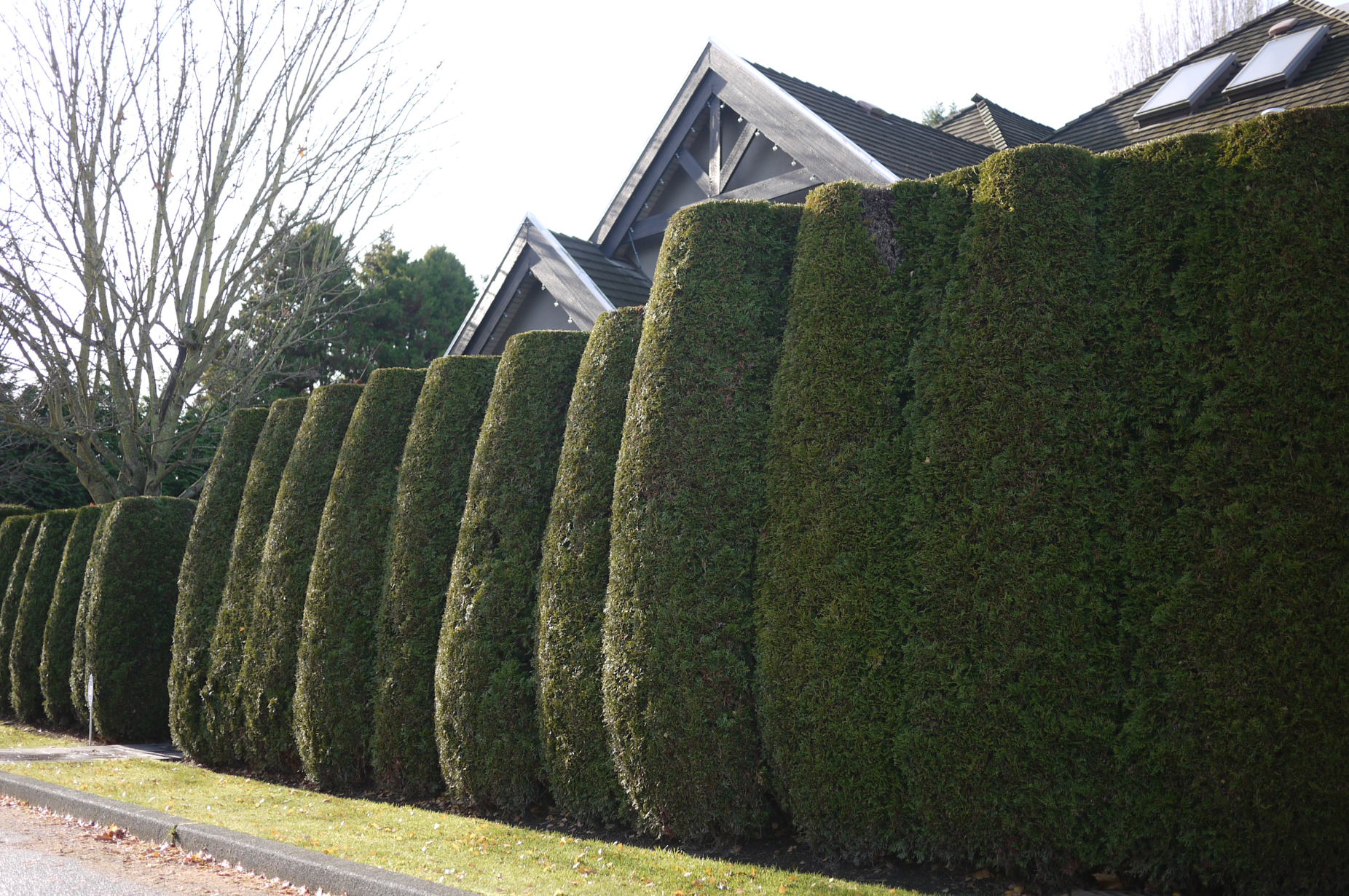Hedge Condition
Photo Essay
Published 2011, part of the Richmondism blog
The hedge has come a long way – evolving from the nominal edge condition of agrarian heritage and the decorative lawn sculpture of topiary tradition, into artful architectural bulwarks often with far more presence that that of the building proper. No longer operating solely at the scale of an object situated in a yard, hedges now frequently define entire streetscapes and subdivisions in Vancouver’s suburbs.
The hedge typology we will call ‘street-wall’ is particularly popular. More than simply a windbreak and acoustical insulator, the street-wall hedge operates as a proprietary signifier, a billboard of land ownership. Established hedges signify established residences, a physical manifestation of presence and duration in a community. When maintained in succession by adjacent property owners, or utilized on a corner property, the street-wall really achieves it’s true divisive potential by becoming an edifice. Openings for driveways or pedestrian walks, often trimmed with wood frames or accessorized by inset gates, become portals into an interior condition before arriving at the house.
The prominence of the superhedge in suburban Vancouver can be attributed to a few conducive circumstances:
The various native species of fast-growing evergreens (especially of the Thuja genus), and the climate which allows them to thrive,
The particular morphologically and culturally suburban nature of the detached, low-rise residential building stock, from which arises the need for the separations and territorial markers,
The climatic concerns of penetrating winds or driving rains.
These conditions may account for the provincial popularity of this particular landscaping solution, but the fundamental desire for separation and interiority, symptomatic of larger cultural aspirations, may better explain their pervasiveness.
For example, one significant benefit of the hedge as barrier is its ability to reclaim the yard as private space. This perimeter threshold acts as an inversion of the public face of the property, focusing the yard in toward the house instead of away toward the street. While deflecting the inward public gaze (which is invariably interpreted to be intrusive), these stalwart barriers also reflect the outward gaze back onto itself, denying any possibility of interaction or exchange. The additional layer of privacy may be comforting; however, when an individual’s connection to the outside world is blocked, so too is their sense of accountability and community engagement. While communicating in no uncertain terms that the residents behind such ramparts wish to be left alone is acceptable in North America, in the UK, high hedges (over 2 meters) are in fact prohibited under the Anti-Social Behaviour Act of 2003.
As the Vancouver model of townhouse-wrapped towers continues to spread and the detached homes of a late 20th century middle-class give way to the townhouse model, it will be interesting to see if the Broadacre dream of an acre per family will also give way to a more collective sense of land use. And while the townhouse wrapper does somewhat reclaim the street edge, it still insulates the private amenities of the condo tower, not to mention the basic programmatic separations and disassociations that persist (people still get in a car and drive to a separate location to participate in community activities). The question for us as designers and urbanists is: do these tropes of isolation and individualism represent an immutable core desire of today and tomorrow’s generation of home owners, or are they simply accepted solutions to the antiquated but far-reaching models of postwar planning?
Or, should these supplementary privacy walls be read as indictments of the architecture and planning that they adorn, which themselves should be bearing the load of modulating public and private space? As architectural structures, these softly geometric markers are magnificent symbols of establishment (and pruning prowess). As spatial interventions, they can potentially reveal much more deeply rooted desires of how we want to live together. Certainly no one answer to these questions will hold true for everyone, but closer scrutiny of these suburban bio-structures may hold the germ of new sub-urban and proto-urban typologies.
Authors
Travis Hanks & Shirley Shen
Photography
Travis Hanks & Shirley Shen





